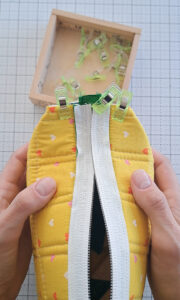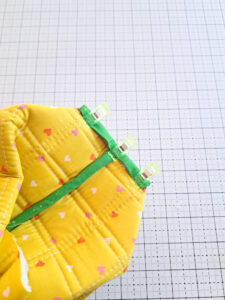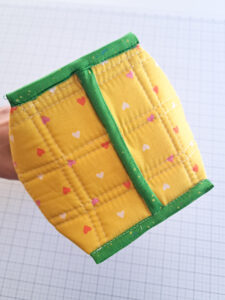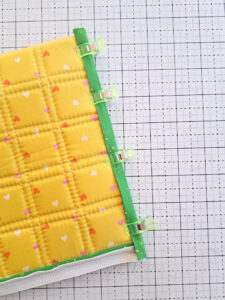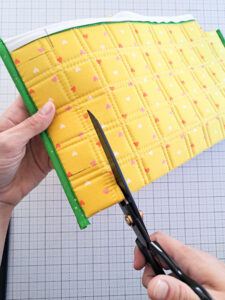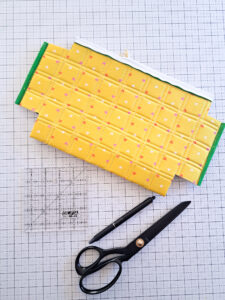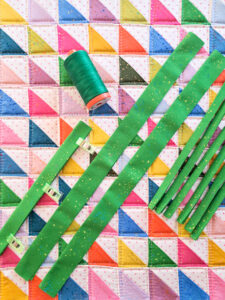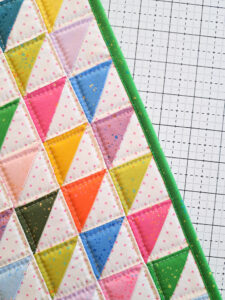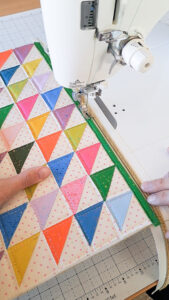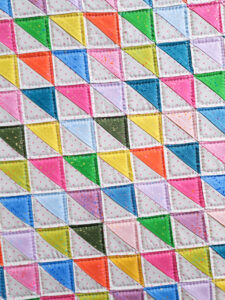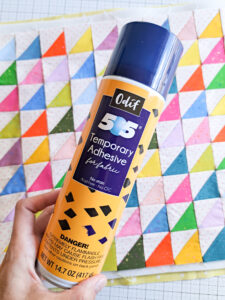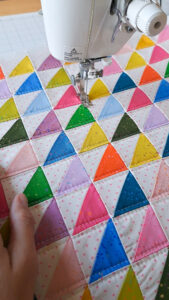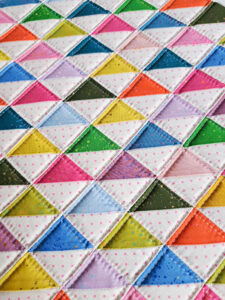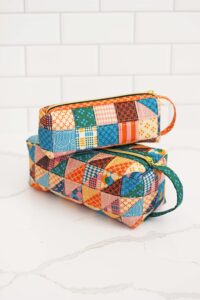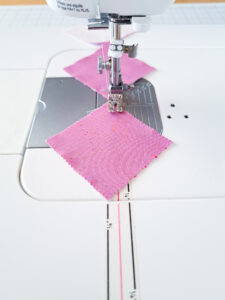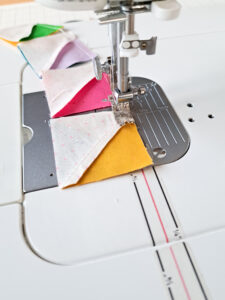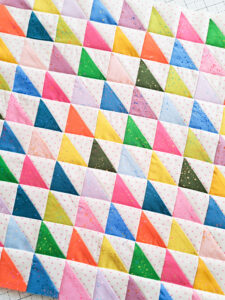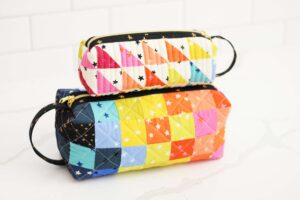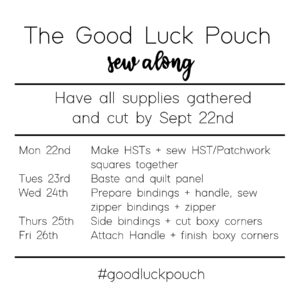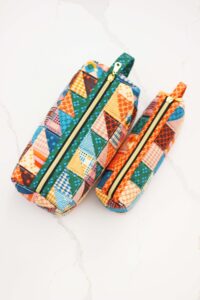Meet the Nightingale Zipper Case!

Thoughtfully constructed, this versatile quilted case features four clear vinyl zipper pockets, allowing you to easily see and access your items. Two slip pockets provide additional storage for quick-grab essentials, while a spacious interior zipper pouch keeps bulky supplies secure and neatly tucked away.

Whether you’re carrying sewing notions, jewelry, makeup, first-aid items, travel essentials, or anything that needs stylish organization, the Nightingale Zipper Case keeps everything in its place. Compact with plenty of storage spaces, this case is ideal for home, travel, or on-the-go creativity—beautifully combining practicality with a beautiful design.
You can find the Nightingale Zipper Case in my shop HERE.

If you’re looking for a little extra guidance in making your own Nightingale Case, please join me for the Nightingale Sew Along! Whether you’d like some extra tips and videos to guide you, or are looking for some motivation to finish a quick project, please join in! The Sew Along itself is completely free to join, but you will need to purchase the Nightingale Zipper Case Pattern to make the bag.
If you’d like to participate in the sew along, make sure you’re signed up (click HERE for the link), have the pattern purchased from my shop , and have all of your supplies gathered and cut out by Monday, December 1st. Every morning (for West Hemisphere participants. It will be later in the day for those in earlier time zones), you’ll receive an email with the day’s assignment and any extra tips I have to add. Plus, I’ll be posting a daily video on Instagram and Facebook to help those of us that are visual learners! Yay!
Since we will have people joining from all over the world, there aren’t any live portions of the sew along. You can sew at your own convenience–including working ahead or catching up later in the week if needed. And if you can’t sew with us the week of December 1st, no worries! Still sign up so you can save the emails and refer to them when you’re ready to make the Nightingale Case.

I get asked all the time about where to find specific supplies, so I put together a list of items that I have personally purchased and used for sewing zipper pouches like the Nightingale Case. Many of the products are linked to Amazon, because that’s an easy source for me to link and for a lot of people to purchase items from. Please feel free to check out other options, too, as you can certainly find the products elsewhere.
Supply Recommendations
Fabric:
I have purchased fabric from SO many different shops (and have generally had very positive experiences). However, below are a few links to my absolute favorite online fabric shops that I shop at again and again.
Monograms for Makers: The Monograms for Makers shop is one of my go-to fabric sources! Meg has so many fun prints (Ruby Star and Rifle Paper galore!), fast shipping, and the best customer service!
Crimson Confection: Jennifer puts together the sweetest bundles of fabric! If you like darling prints and perfectly curated bundles, check out Crimson Confection.
Stitch Supply: A large selection of fabric and other notions like zippers, bag hardware, webbing (for handles). Plus, order over $50 or $100 and get a free small or large project bag!
Zippers:
For the Nightingale Zipper Case, I recommend either a standard size #3 nylon zipper (like what you’d find at a big box store like Walmart or Hobby Lobby), or a larger size #5 zipper. Size #5 zippers have larger teeth, a bigger zipper pull, and wider zipper tape, which makes them a little easier to sew with. A nylon zipper is preferable over a metal zipper, as you can sew right over the nylon (plastic) zipper teeth without breaking a needle. I almost always purchase and use size #5 zippers by the yard. When you purchase a zipper by the yard, it comes in a long coil so you can cut the zipper to size then attach a zipper pull. This is a really efficient way to use zippers, as you cut off the exact amount you need for the project. I have some of my favorite zippers and sources linked below.
YKK Zippers from the Etsy shop ZipIt
Zippers by the yard from Amazon. I have purchased this brand on Amazon many, many times. They come in 10 yard lengths (!) and it’s a great price: Amazon link
By Annie Zippers by the yard. I have pretty much every color of By Annie Zippers by the yard. They are a great quality and come in fun colors. They are actually size #4.5, so slightly smaller than #5 zippers, which doesn’t make a noticeable difference except that the zipper pulls aren’t interchangeable with size #5 zippers: Amazon link
Hardware, Webbing, and Vinyl:
You can find the 1″ strap slider, webbing, and vinyl needed for the Nightingale Case at various places. Here are a few recommendations to get you going.
Stitch Supply Co has a lot of strap slider options, the coolest webbing, and my favorite By Annie Vinyl. Remember to check to make sure you are getting the correct 1″ width for the webbing and slider.
Bulk white webbing (to cover with fabric): If I’m not using a decorative webbing, I use white webbing and cover it with coordinating fabric. It’s very cost-effective to purchase the webbing in bulk (a 10 or 25 yard roll) and really nice to always have webbing on hand when you need it. Link to webbing on Amazon that I have purchased.
Vinyl: I prefer to purchase By Annie 16 gauge vinyl. You can find it at Stitch Supply Co, and various other shops on Etsy. You can also usually find vinyl at big box stores that sell fabric. It’s usually on a long roll by the upholstery fabric. I would recommend getting somewhere close to 16 gauge for the thickness (12 -20 gauge would all work well).
Quilting material:
I prefer using Soft and Stable in between my layers as I quilt. Soft and Stable is a foam stabilizer that gives more structure and protection than a regular batting. There are other foam stabilizers (like Pellon Flex Foam) that also work well–just make sure you are getting a big enough piece for your project. You can also use regular batting like Warm and Natural or Hobbs Heirloom batting.
Soft and Stable: Amazon
Pellon Flex Foam: Amazon. (Pellon Flex Foam comes in 20″ width, so make sure it’s big enough for your project! Also, Pellon Flex Foam has fusible options–I prefer the non-fusible versions, but many people use and prefer the fusible type–it’s just personal preference).
Other Sewing Supplies:
Hera Marker for marking straight quilting lines: Amazon
Wonder Binding Clips. (I use these ALL the time to hold things in place while I sew): Amazon
Odif 505 Basting Spray: my preferred method for basting small projects like zipper pouches. Amazon link HERE.
OLFA Rotary Cutter: my favorite rotary cutter out there! Amazon link
Clover chalk marker. I use this white chalk marker for marking on darker fabrics. It’s easy to brush the chalk marks off after. Amazon link

Please let me know if you have any other requests for supply recommendations. You can always look at my Amazon Favorites page HERE for items that I have purchased and use regularly. Again, feel free to shop at your local stores for supplies–Amazon is just a handy tool for me to link my favorites.
Happy Sewing!
-Kristina
































































